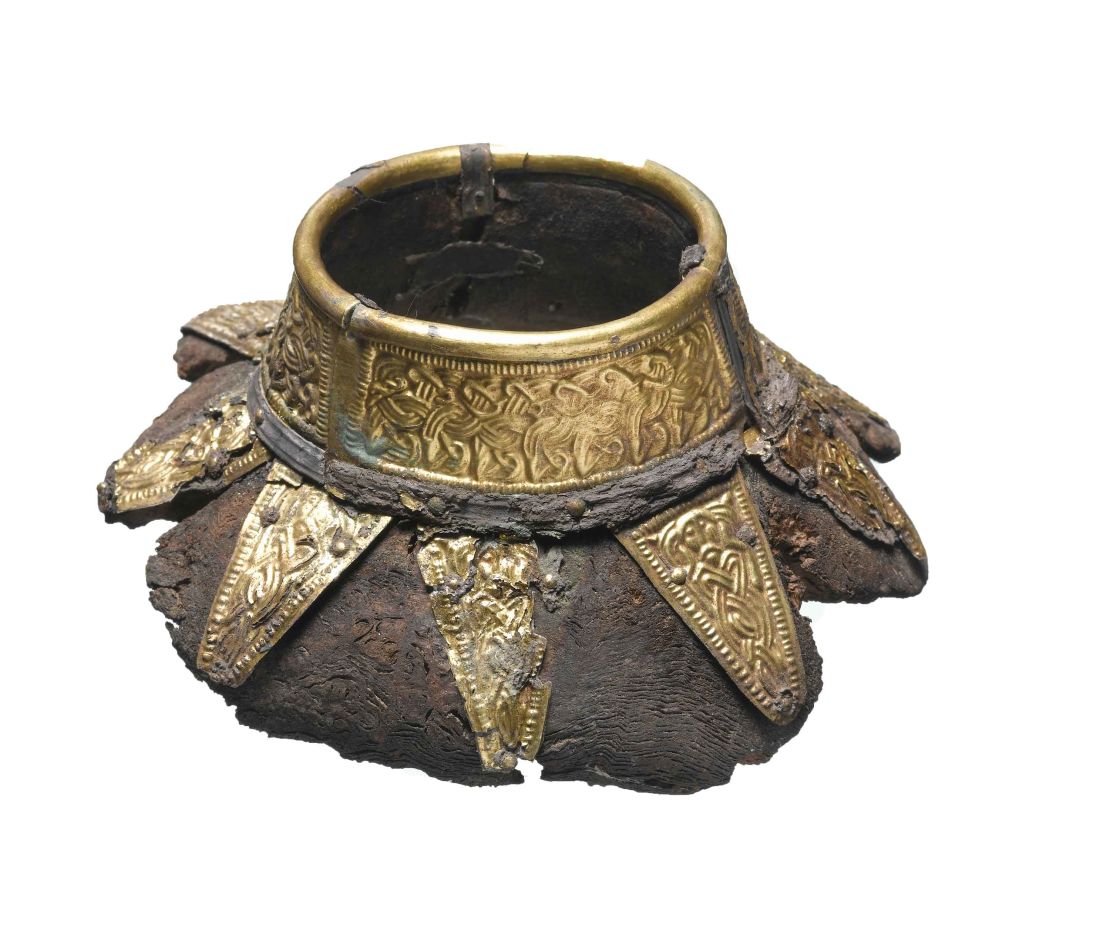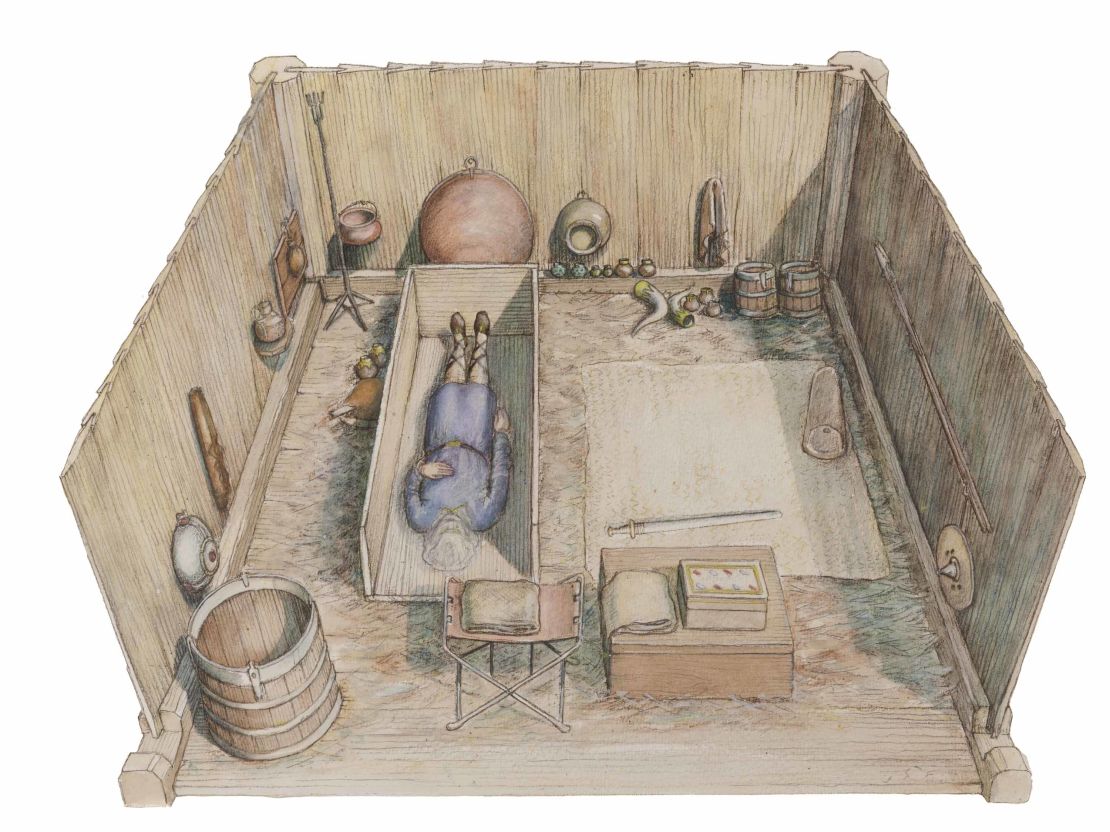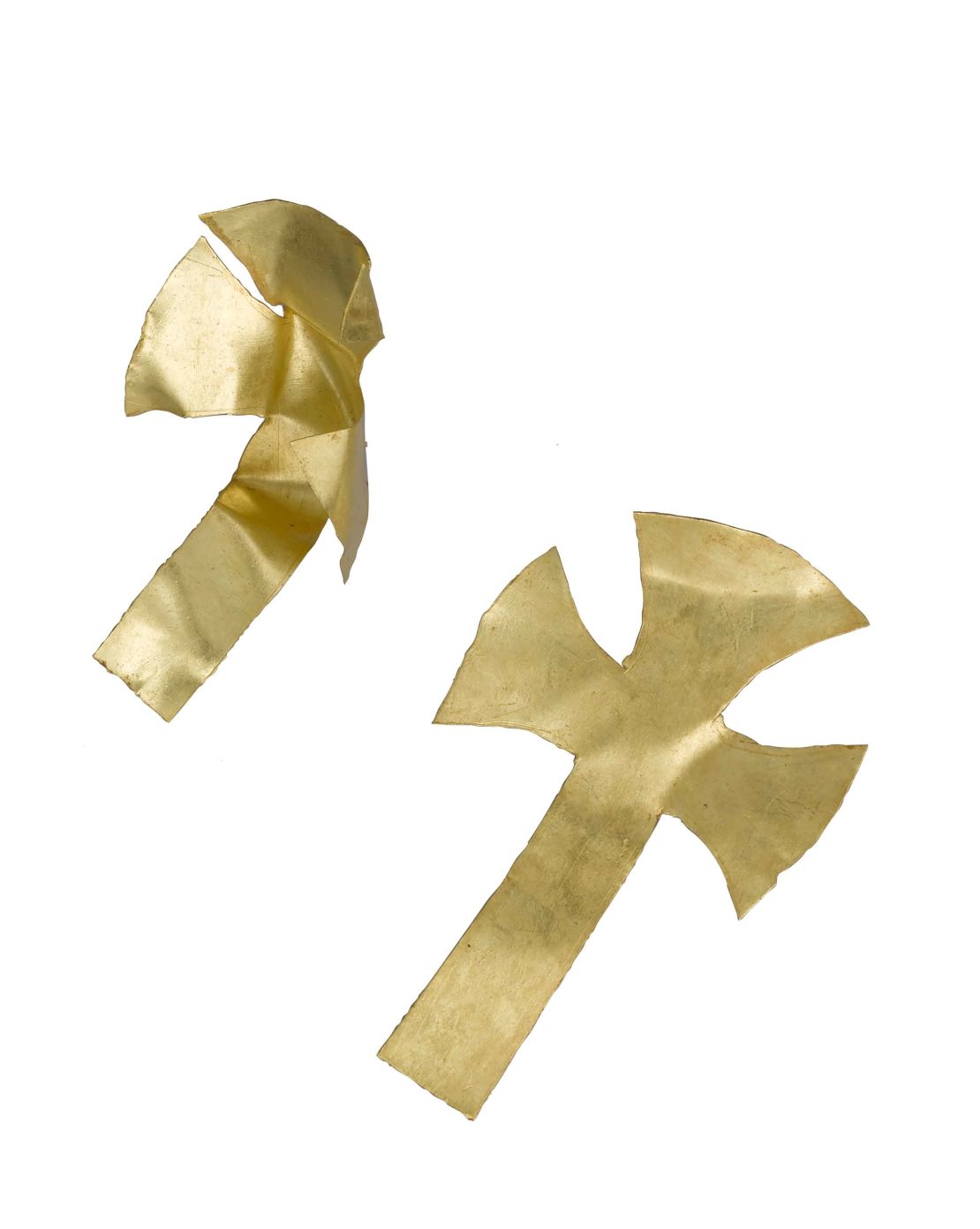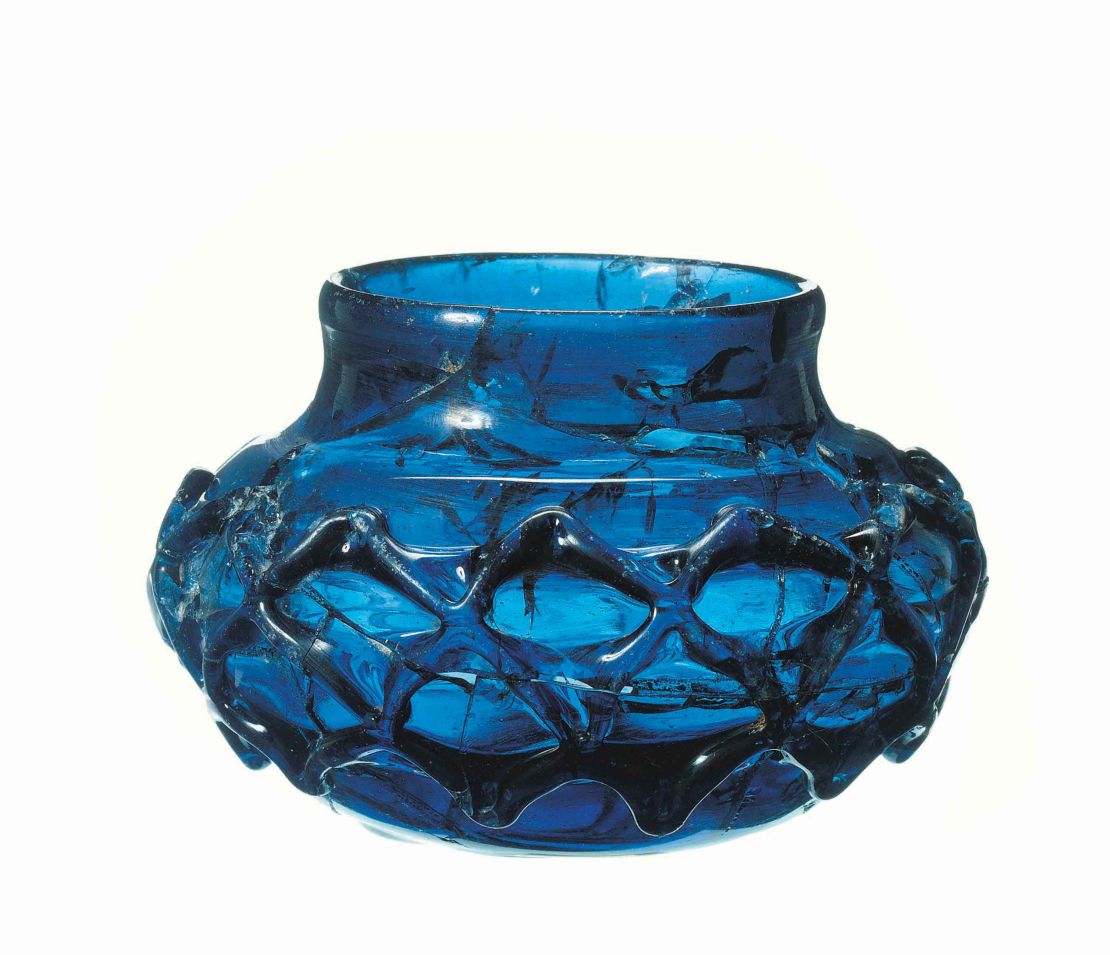Road-widening isn’t normally the kind of thing to set pulses racing, but one such project in the UK uncovered a hugely significant archaeological site.
Now research published Thursday sheds light on a collection of incredible artifacts discovered on a fateful dig in 2003. That day, workers unearthed an Anglo-Saxon princely burial chamber in Prittlewell, Essex, between a main road and a railway line, with an Aldi supermarket and the Saxon King pub just nearby.
It’s a somewhat incongruous location for what experts are calling one of the most significant Anglo-Saxon discoveries ever made in the UK. The haul includes previously unseen artifacts, according to Sue Hirst, Anglo-Saxon specialist at MOLA (Museum of London Archaeology), which led the project.

“It was an astonishing sight to look down and see the metal artifacts hanging on the walls,” she said, adding that it was a “once in a lifetime” opportunity.
While it’s impossible to confirm who is buried in the chamber, experts believe that it may be Seaxa, brother of the Christian King Saebert, after dating the chamber to the late 6th century.

The artifacts – which are to go on display at Southend Central Museum on Saturday – include a pristine gold buckle, a drinking horn and colored glass vessels, as well as a variety of weaponry.
“What this burial tells us is that this someone of a very high status,” said Hirst. “He’s a big cheese.”
And evidence of wide-ranging international connections, such as the flagon from the eastern Mediterranean and a Byzantine or Eastern Roman spoon, has made experts re-evaluate the influence of the area’s Anglo Saxon society.
“What this says about the East Saxons is that they’re prime players at this time,” said Hirst.

The chamber is thought to be the earliest dated Christian Anglo-Saxon princely burial in the UK – a conclusion based on the discovery of two gold-foil crosses which are believed to have been placed over the eyes of the deceased. But the prince was also buried according to pre-Christian traditions, such as the mound, grave goods and chamber.
Hirst believes that the research was so successful due to the preservation of the chamber after the roof collapsed, filling the space with earth from the burial mound and concealing it from above.

“Nothing had disturbed this burial,” she said. This allowed a team of over 40 experts to use the latest scientific techniques in their study of the chamber.
They were able to record the complete form of an Anglo-Saxon stringed instrument called a lyre for the first time, despite the fact that it had almost entirely decayed.
Researchers managed to piece together its form from a soil stain and fragments of wood and metal fittings that were still in their original positions, even determining that the lyre had been split in half and later repaired before the burial.



